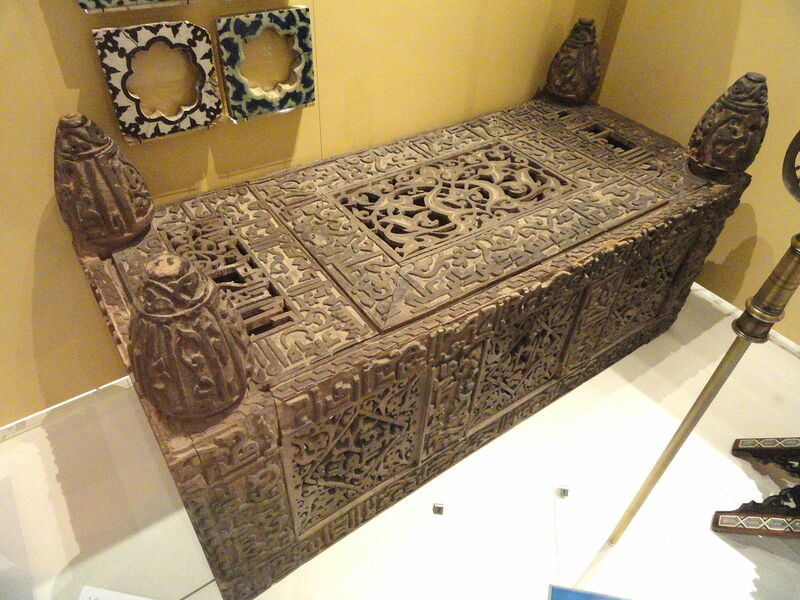Sunduq
Type:
Cenotaphs
Date:
Eleventh to twelfth century
Location or Findspot (Modern-Day Country):
Iran
Medium:
Wood
Dimensions:
69.5 × 60.5 × 145.1 cm
Description:
The Seljuqs dedicated considerable resources to funerary arts; in their lands, as elsewhere, burial practices varied, from following the simple precepts in the hadith to clothing the dead in silk garments to constructing tomb towers. These practices often drew upon the older customs of the diverse people who composed the Islamicate world. An eleventh- or twelfth-century sunduq or cenotaph from Seljuq Iran emphasizes the religious identity of the person it commemorates. It consists of a large wooden box covered with carved Kufic inscriptions that are arranged in wide perpendicular bands.
The gridlike arrangement of the inscriptions suggests an effort to make them easy to read, as does their contrasting darker color (they appear to have been painted). Openwork panels on the sides and lid feature inscriptions and vegetal ornament, as do the four large finials on the lid. The Arabic inscriptions convey Shi'i identity; passages from the Qur'an and hadith are amplified by the names of the twelve Shi'i imams, and Fatima, Husayn, and 'Ali are singled out for praise.
Given the highly ornamental surface and fragile material of the sunduq, it was not meant for an open-air cemetery; it was likely a key furnishing inside a dynastic mausoleum, madrasa, or shrine commemorating a holy person. It does not reveal the name, gender, or death date of the person it honors, but presumably the architectural setting would have made that clear. Despite this anonymity, the sunduq occupies an important place between the monumental funerary architecture of the Samanids and the furnishings of later Shi'i shrines.
The gridlike arrangement of the inscriptions suggests an effort to make them easy to read, as does their contrasting darker color (they appear to have been painted). Openwork panels on the sides and lid feature inscriptions and vegetal ornament, as do the four large finials on the lid. The Arabic inscriptions convey Shi'i identity; passages from the Qur'an and hadith are amplified by the names of the twelve Shi'i imams, and Fatima, Husayn, and 'Ali are singled out for praise.
Given the highly ornamental surface and fragile material of the sunduq, it was not meant for an open-air cemetery; it was likely a key furnishing inside a dynastic mausoleum, madrasa, or shrine commemorating a holy person. It does not reveal the name, gender, or death date of the person it honors, but presumably the architectural setting would have made that clear. Despite this anonymity, the sunduq occupies an important place between the monumental funerary architecture of the Samanids and the furnishings of later Shi'i shrines.
Relevant Textbook Chapter(s):
7
Repository and Online Resources:
• See more views of the sunduq on the website of the Royal Ontario Museum.
Image Credits:
Wikimedia Commons

